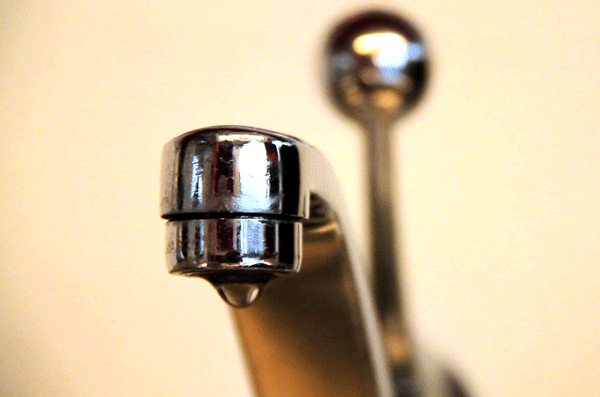Old pipes at Denver Public School buildings have been leaching lead into some water sources, and though officials have treated the most polluted sources, kids were exposed for years beforehand, and contaminated water fountains and sinks remain.
According to hundreds of pages of data collected by the school district and Denver Water in 2016 and 2017, all but 10 city schools tested positive for some concentration of lead in at least one water source -- a sink or a water fountain, for instance. The vast majority of schools still have lead concentrations above zero, and nothing requires that to change.
About 3 percent of water sources across more than 100 schools tested positive for lead at levels considered high by experts. Some of those water sources have been treated to lower the lead concentrations. Others received signs instructing no one to drink the water. DPS shut down the rest.
While lead remains, parents have no reason to be concerned, according to Denver Public Schools spokesman Will Jones, because lead levels are now below what the Environmental Protection Agency considers "actionable."
But there's no such thing as a "safe" amount of lead in the body, according to the EPA and the Centers for Disease Control.
The metal is linked to physical and cognitive problems in kids. It can lower their IQs, according to a 2016 report by the American Academy of Pediatrics.
Local governments and water utilities have historically justified doses of 15 parts per billion or less because of meager resources to fix the problem, according to Bruce Lanphear, a professor who specializes in environmental neurotoxins at Simon Fraser University in British Columbia. That threshold was never meant to be a health standard, he said, but that's how it's been rationalized over the years.
DPS refused multiple Denverite requests for interviews with district officials for this story. Jones -- the spokesman -- stressed that lead testing is not required and that water samples were from the "worst-case" scenario early in the morning, before any faucets had run.
"Then at eight o'clock, 500 children come in and they drink the water," said Ronnie Levin, who runs the water and health program at Harvard University's T.H. Chan School of Public Health. "This is a routine exposure.
"If I'm trying to lose weight, how bad is one cookie? Well, one cookie in the context of what? One cookie every day? One cookie this morning and then one tonight?"
Neither Denver Water nor the Denver Department of Public Health and Environment would grant an interview about health effects for this story. DDPHE's stance aligns with the EPA's, according to a spokesman for the department.
But while EPA allows a certain amount of lead in the water -- the "action level" is 15 parts per billion for homes, 20 at schools -- it says clearly that it doesn't think it's safe, and that the "goal" is zero lead.
"EPA has set the maximum contaminant level goal for lead in drinking water at zero because lead is a toxic metal that can be harmful to human health even at low exposure levels," the agency's website states. "Lead is persistent, and it can bioaccumulate in the body over time."
Forty-four school buildings tested positive for lead at 50 parts per billion or greater, but DPS did not document how much greater, citing the use of different laboratories. The water is lead-free when it comes out of the treatment plant, a spokesman for Denver Water said in an email. The main sources are old pipes and fasteners.
The map below shows lead concentrations before DPS intervened.
The blue, starred circles represent schools where water fountains and other sources tested between 15 and 49.9 parts per billion. The red, starred circles are schools where water fountains and other sources had at least 50 parts per billion.
The blue circles with squares inside represent schools with sources other than water fountains above 15 parts per billion. The red circles with squares inside are schools that had sources other than water fountains leach lead at a rate of at least 50 parts per billion.
Denver’s lead concentrations are not surprising to Lanphear. What’s surprising is the tolerance school districts and water utilities have for any lead at all.
“In terms of drinking fountain water, often times we dismiss lead because kids are only gonna take one or two gulps per day,” Lanphear said. “But if you go with population perspective it gets worse.”
In other words, one kid who loses several IQ points because of lead is bad, but so is thousands of kids losing half a point.
Lanphear called the typical approach to dealing with the pollutant “ignorant” and “outdated.” Jones, at DPS, said the district will act on lower-level lead sources next.
On her first day of school four years ago, Kelsey Tamble, a kindergarten teacher at Ellis Elementary School, said a colleague advised her not to drink the water.
It was contaminated, she was told. The colleague was right. Three water fixtures tested at so-called high levels, one of which was a water fountain that DPS has since shut down.
“I’ve always been an advocate for my students and their families, but now that I have a daughter of my own, it just feels more real, knowing that she will go to public school one day and that there are factors like that that can affect her health long term, and they’d be out of my control,” Tamble said. “So I think that we need to bring light to these important issues because it truly is terrifying.”

Kids ask Tamble for water up to 10 times a day. She advises parents to send their children to school with a full water bottle, but they use the sinks to refill them, she says.
There's no way to measure how many kids were affected and how severe those effects were, according to Levin.
DPS advises parents to speak with their doctors if concerned.
DPS tested more than 8,000 water sources and made the results publicly available, but teachers and parents aren't necessarily aware.
The outcomes and treatments are posted on the DPS website. (It has not been updated to include all of the repairs, according to DPS.) Jones said the district sent letters to schools in 2016 and 2017 to communicate the results to families.
Tamble was unaware of anything beyond rumor. Kathryn White, too, a parent of three DPS students over the last 18 years, had no idea.
"I may not have read every email, but I would say that I have not felt like that information has gotten to me in a way that was particularly proactive from the district or the schools," White said.
White's son goes to Denver Center for International Studies in Baker. Before the faucets were treated, the school had 12 water sources with a concentration of lead at 15 parts per billion. Two spigots tested above 50. Many sources, including a water fountain, still have concentrations of 14 and lower.
White was not panicked upon hearing the news. But she certainly wasn't thrilled about potentially negative cognitive effects from water laced with lead.
"He is a student who things do not come easily for him," she said. "He had a rough start in life and we're trying to make up for lost time... to offset some of the things he was faced with earlier in life."
She contrasted the school district's approach to ingesting a harmful chemical with its approach to feeding kids healthy food. The cafeteria aims to serve increasingly healthy food, she said, and constantly pushes the importance of breakfast to help students learn.
"If you look at DPS's goals about bringing students up academically, the district has really tried to be focused there -- claims to be focused there -- and if there's a connection between drinking the water and cognitive effects, that's not good."













